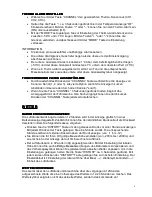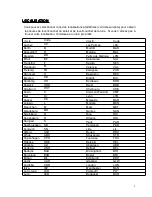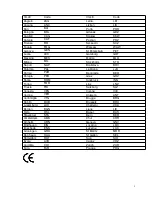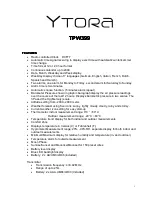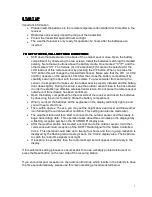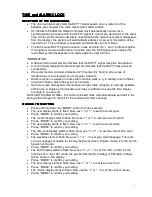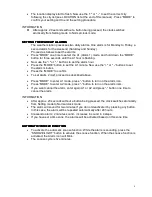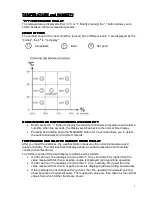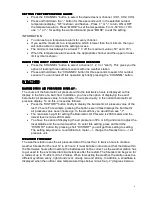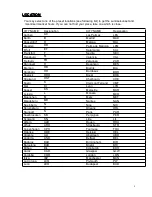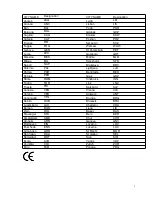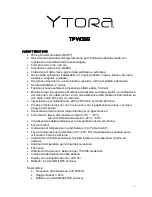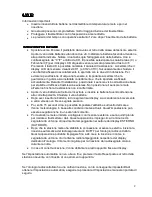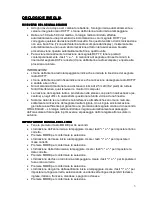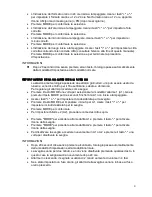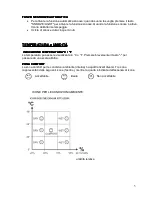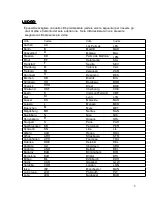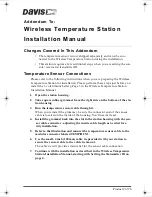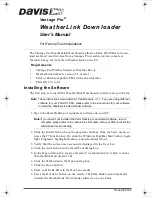
2
START
START
START
START UP
UP
UP
UP
Important information
•
Please insert the batteries in the remote temperature transmitter first, thereafter in the
receiver
•
Obstacles can severely impair the range of the transmitter.
•
Protect the transmitter against direct sunlight.
•
The weather forecast is only ready for operation 12 hours after the batteries are
inserted.
TO
TO
TO
TO GET
GET
GET
GET STARTED,
STARTED,
STARTED,
STARTED, FOLLOW
FOLLOW
FOLLOW
FOLLOW THESE
THESE
THESE
THESE DIRECTIONS:
DIRECTIONS:
DIRECTIONS:
DIRECTIONS:
•
Shift down the table stand on the back of the outdoor sensor case. Open the battery
compartment by unscrewing the two screws. Install the batteries matching the marked
polarity. Note the two buttons above the battery cradle. One marked “°C°/F°” and the
other marked “CH”. The Celsius (C) or Fahrenheit (F) Scale can be selected for the
LCD readout of this remote sensor by pressing the C/F button. When you press the
“CH” button this will change the transmitted channel. Make sure that the CH1 (or CH2
or CH3) appears on the sensor's LCD. After that, close the battery compartment by
carefully securing the door with the two screws. To prevent water from entering the
sensor, it is important to make sure the rubber seal is properly installed and the battery
door closes tightly. During the setup, keep the outdoor sensor close to the base station
in order to establish an effective wireless transmission. Do not place the remote sensor
outside until transmission has been confirmed.
•
Open the battery compartment on the rear side of the receiver and insert the batteries
by observing the correct polarity. Close the battery compartment.
•
When you insert the batteries all the segments on the display will briefly light up and
you will hear a short tone.
•
Then, within approx. 15 secs, you may set the height above sea level and the weather
icon following the current weather condition. This setting can also be made later.
•
The weather station will then start to connect to the outdoor sensor and thus ready to
begin transmitting data. This operation takes about three minutes and is displayed by
a flashing reception symbol in the ”OUTDOOR” display area.
•
After the weather station has created a connection to the outdoor sensor, it will then
commence automatic reception of the DCF77 Radio Signal for the Radio Controlled
Clock. This operation could take up to twenty-four hours and the on-going reception is
displayed by the flashing radio mast symbol in the “Clock” display area. The best time
to catch the radio time signals is at night.
•
If reception is successful, then the radio mast symbol will appear continuously in the
display.
If this automatic setting process is unsuccessful, then use a sharply pointed instrument to
press the Reset button on the rear side of the receiving station.
If you encounter poor reception on the radio control clock, which results in the inability to have
the time set automatically, please use this manual setting procedure listed below.
Summary of Contents for TPW399
Page 46: ...10 ...

